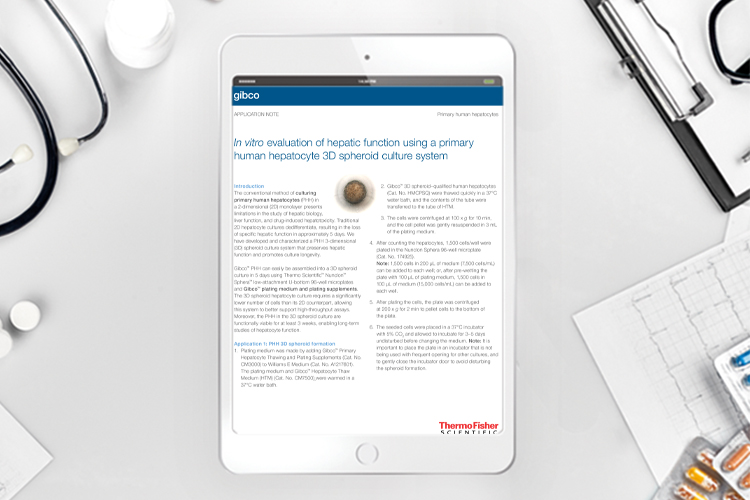Application note: Evaluation of hepatic function in 3D culture
Posted: 13 February 2020 | High Content Analysis from Thermo Fisher Scientific | No comments yet
The conventional method of culturing primary human hepatocytes (PHH) in a 2-dimensional (2D) monolayer presents limitations in the study of hepatic biology, liver function, and drug-induced hepatotoxicity. Traditional 2D hepatocyte cultures dedifferentiate, resulting in the loss of specific hepatic function in approximately 5 days. We have developed and characterized a PHH 3-dimensional (3D) spheroid culture system that preserves hepatic function and promotes culture longevity.
The 3D spheroid hepatocyte culture requires a significantly lower number of cells than its 2D counterpart, allowing this system to better support high-throughput assays. Moreover, the PHH in the 3D spheroid culture are functionally viable for at least 3 weeks, enabling long-term studies of hepatocyte function.
Related content from this organisation
- Application note: Evaluation of hepatic function in 3D culture
- Application note: Hypoxia measurements in live and fixed cells
- Application note: High-throughput imaging and analysis of spheroids
- Application note: Oxidative Stress Measurements Made Easy
- Application note: Understanding Cell Death by High Content Analysis
Related topics
Assays, Drug Discovery Processes, Screening, Targets, Translational Science
Related organisations
High Content Analysis from ThermoFisher Scientific









